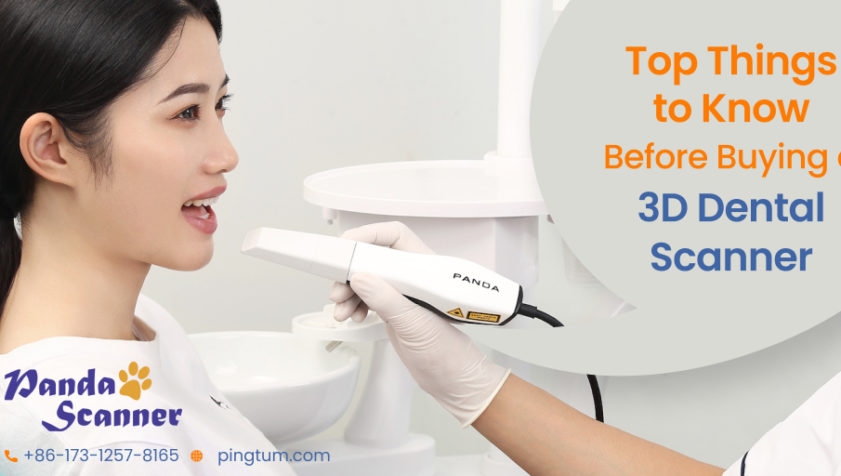Digital dentistry has transformed the way dentists diagnose and treat patients for dental ailments. It has brought convenience, speed, and accuracy to the whole process. If you are one of the dentists who is willing to buy a 3D dental scanner, then read this blog further. Here, we discuss the top 5 things you need to keep in mind while transforming your dental clinic into a digital hub. The benefits of going digital are many and they may be tempting to make the digital scanner an integral part of your workflow. But caution should be the norm here, for all that glitters may not be gold.

Top Factors to Consider Before Buying a Dental Scanner
Have you heard rave reviews about digital dentistry and how every dentist in town is joining the league? You too should get a digital scanner, such as the Panda P2 intraoral scanner, for your clinic and increase patient footfall. However, before doing so, consider the top things before buying a dental scanner:
# Find out any hidden costs: Buying and operating a dental scanner may involve varying costs. For instance, there are companies charging annual subscription fees to operate the devices. These costs are additional to the buying cost and may inflate your bill in the long term. This is more in cases where the initial buying cost is substantially high. So, it is better to earmark a budget and compare scanners that fit into that. Make an informed decision by considering all costs (explicit or hidden).
# Keep a long-term perspective: The dental scanner you purchase should be workable in the future as well. In other words, it should be upgradable to higher software versions and continue to remain operable. It should not only serve your clinic in the short term but long term as well. Why spend money on a device that may not allow you to perform multiple functions or remain relevant in the future?
# Compare: There is no one-size-fits-all kind of scanner. What may work well for others may not be suitable for your needs. Choose the type of scanner you would need for your clinic based on your specialization. Seek recommendations from peers and narrow down your choices. Compare various 3D dental scanners available in the market and choose one that shall help to diagnose and treat your patients. Besides, choose the one that is easy to use and has the smallest learning curve, say the Panda P2 intraoral scanner.
# Try before buying: Since the dental scanner is going to be a long-term investment, always prefer buying one after using it, say at an exhibition. Or, you may ask for a live demo by the company representative to understand the way to operate it and get accurate results.
# Change in the workflow: You may be used to the traditional system of diagnosing a dental ailment. However, with digital dentistry, you should be ready to embrace a change in the workflow. Even though it might appear to be a daunting task initially, the long-term benefits are going to be immense. So, be ready to embrace the change.
Conclusion
Buying a 3D dental scanner for your clinic is a crucial decision that you must take after weighing all scenarios, including the possibility of experiencing changes in your workflow. The scanner will be useful if it suits your purpose. So, ensure the decision of purchasing the scanner is not taken in haste, and you enjoy the long-term benefits.






